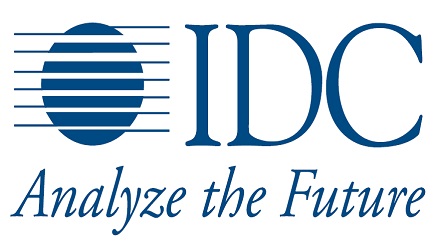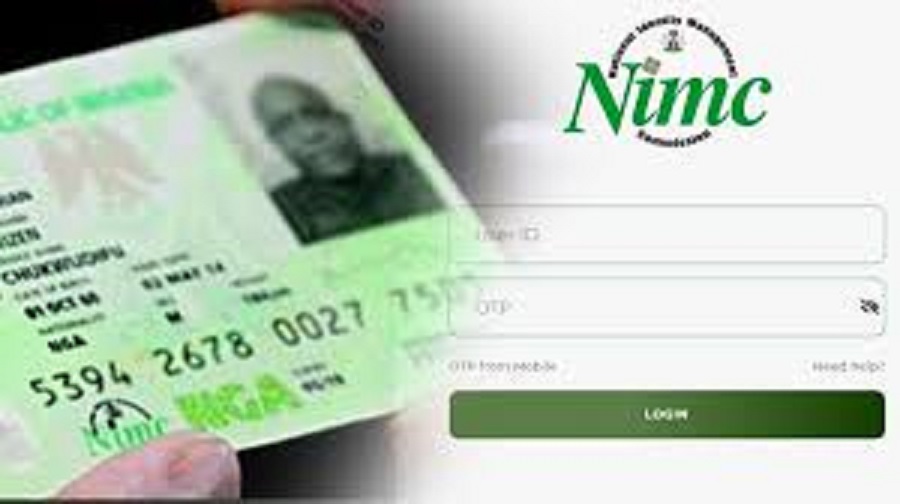E-Business
IDC Evaluates Global Energy, Water Delivery Utilities Software Providers

International Data Corporation (IDC) Energy Insights has released a MarketScape study that provides utility companies, specifically those focused on energy and water delivery (both transmission and distribution), with an insight into the current capabilities and future strategies of EAM vendors and guidance on how to approach planning for a new EAM implementation.
IDC MarketScape: Worldwide Enterprise Asset Management Software for Energy and Water Delivery Utilities, 2014 Vendor Assessment evaluates eight vendors: CGI; IBM; IFS; Infor; Oracle; SAP; Schneider Electric; and Ventyx, an ABB company.
Concerning market offerings, IDC Energy Insights highlights indicate that vendors are systematically enriching their product features and functionalities.
Many of them have very broad capabilities and a future vision that meets and anticipates the utility industry needs.
The majority of solutions incorporate compatible unit (CU) capabilities.
A CU is a template that defines labor, materials, services, and tools resources required to perform work.
Linear asset management capabilities have become available in the majority of products evaluated in this IDC MarketScape. Additionally, some vendors have aligned applications to guidelines and good practices defined by PAS-55, or with emerging ISO 55000 standards.
Some EAM solutions have embedded a mobility component for field work.
The majority integrate with the vendors’ own mobile field force management (MFFM) solution, but integration with third-party MFFM is also supported.
Business analytics and insights are made available via embedded dashboards and in many cases via integration with business intelligence solutions.
Some vendors evaluated in this IDC MarketScape need to improve and modernize their user interface.
They are addressing the issue with dedicated investments.
Customer satisfaction with regard to pricing, contractual conditions, and ongoing support needs to be more carefully managed by some vendors.
Even if energy and water delivery utilities still seem to prefer on-premises installations, the cloud option is becoming available on the market. Some players are even exclusively offering cloud as a possible delivery model.
“Enterprise asset management [EAM] applications are core to any electric, gas, and water utility. Over the years, there has been an evolution in the best approaches to asset management, enlarging the scope from pure maintenance to managing the assets, including their economic value, across their entire life cycle. EAM is becoming a strategic planning tool for asset investments,” said Roberta Bigliani, associate vice president and head of Europe, Middle East, and Africa, IDC Energy Insights. “Energy and water delivery utilities planning to invest in an EAM application should consider this study to get a first independent assessment of software
The IDC MarketScape vendor analysis model is designed to provide an overview of the competitive fitness of ICT (information and communications technology) suppliers in a given market.
The research methodology utilizes a rigorous scoring methodology based on both qualitative and quantitative criteria that results in a single graphical illustration of each vendor’s position within a given market.
IDC MarketScape provides a clear framework in which the product and service offerings, capabilities and strategies, and current and future market success factors of IT and telecommunications vendors can be meaningfully compared.
The framework also provides technology buyers with a 360-degree assessment of the strengths and weaknesses of current and prospective vendors.
E-Business
Microsoft Server Hack Likely Solo Actor, Thousands at Risk

A widespread cyberattack targeting Microsoft’s (MSFT.O) server software used by thousands of government agencies and businesses for internal document sharing was likely orchestrated by a single actor, a cybersecurity researcher said on Monday.

Microsoft issued an alert on Saturday warning of “active attacks” on on-premise SharePoint servers.
The company clarified that SharePoint Online, part of the Microsoft 365 cloud suite, was not affected by the exploit, which is considered a “zero-day” vulnerability due to its previously undiscovered nature.
“Based on the consistency of the tradecraft seen across observed attacks, the campaign launched on Friday appears to be a single actor. However, it’s possible that this will quickly change,” Rafe Pilling, director of Threat Intelligence at Sophos, a British cybersecurity firm.
That tradecraft included the sending of the same digital payload to multiple targets, Pilling added.
Microsoft said it had “provided security updates and encourages customers to install them,” a company spokesperson said in an emailed statement.
It was not clear who was behind the ongoing hack. The FBI said on Sunday it was aware of the attacks and was working closely with its federal and private-sector partners, but offered no other details.
Britain’s National Cyber Security Centre did not immediately respond to a request for comment.
The Washington Post said unidentified actors in the past few days had exploited a flaw to launch an attack that targeted U.S. and international agencies and businesses.
According to data from Shodan, a search engine that helps to identify internet-linked equipment, over 8,000 servers online could theoretically have already been compromised by hackers.
Those servers include major industrial firms, banks, auditors, healthcare companies, and several U.S. state-level and international government entities.
“The SharePoint incident appears to have created a broad level of compromise across a range of servers globally,” said Daniel Card of British cybersecurity consultancy, PwnDefend.
“Taking an assumed breach approach is wise, and it’s also important to understand that just applying the patch isn’t all that is required here.”
E-Business
Flaw in Microsoft SharePoint Sparks Global Cybersecurity Concern

A Microsoft SharePoint server software flaw is causing widespread concern across the global cybersecurity landscape, exposing thousands of organisations to hackers exploiting a new vulnerability.

This critical vulnerability exposes government agencies, universities, and energy firms who are at risk of cyberattacks. The flaw, now being actively exploited by unidentified hackers, allows attackers to gain deep, remote access to on-premise SharePoint servers.
The U.S. Cybersecurity and Infrastructure Security Agency (CISA) has confirmed that the vulnerability can enable malicious actors to access internal files, change configurations, and even execute remote code, effectively giving them high-level control over compromised systems.
Microsoft has also acknowledged the breach and released a security patch aimed at stopping the ongoing attacks. The firm urged users to apply the patch immediately, saying it is working to roll out additional protections, according to a statement reported by Bloomberg.
Despite these efforts, cybersecurity researchers warn that systems may remain vulnerable if attackers have already infiltrated networks, stolen authentication keys, or implanted persistent backdoors before patches were applied.
The United States hosts the highest number of these vulnerable systems, followed by the Netherlands, the United Kingdom, and Canada.
The Washington Post reported that the breach has already impacted a range of institutions, including U.S. federal and state agencies, academic institutions, energy companies, and a telecommunications firm in Asia.
This latest incident adds to a growing list of cybersecurity challenges facing Microsoft. In March, the company revealed that Chinese state-backed hackers had targeted its cloud-based services to infiltrate both U.S. and international organisations.
Last year, the U.S. Cyber Safety Review Board sharply criticised Microsoft’s internal security culture as ‘inadequate’ after a separate breach compromised its Exchange Online mail systems and exposed communications of high-level officials.
E-Business
NIMC Enrolls 122m for NIN, Cuts Extortion by 40 Percent

National Identity Management Commission (NIMC) has said that it has reduced incidents of extortion and unofficial charges in the identity enrolment process by over 40 per cent.

Abisoye Coker-Odusote, director general of NIMC,
Abisoye Coker-Odusote, director general of NIMC, who disclosed this at an event in Lagos at the weekend, attributed the drop to improved transparency in fee structure at the commission.
The CEO was represented by Lanre Yusuf, director, Information Technology and Identity Database, NINC.
The workshop, organised by the identity regulator in partnership with the Guild of Corporate Online Publishers, focused on repositioning Nigeria’s digital identity landscape and combating misinformation.
According to Coker-Odusote, the sharp reduction in illicit charges is a direct result of reforms introduced by NIMC to curb racketeering and unauthorised payments, which have for years plagued the national identity registration process..
“Enrolment for the National Identification Number remains free. We have standardised modification and authentication fees, and these are publicly disclosed. Our enforcement of a transparent fee structure has resulted in a 40 per cent drop in extortion and unofficial charges,” the regulator said.
She explained that prior to her assumption of office, complaints about exploitative fees at enrolment centres were widespread, fuelling public distrust in the system.
However, she noted that the commission had since prioritised transparency and stakeholder accountability, ensuring that Nigerians no longer have to pay above the legally mandated fees. “We are addressing deep-rooted issues that once undermined public confidence in the enrolment process,” she said.
The NIMC chief added that the commission had introduced digital tools to reduce human interference in the registration process.
These include the NINAuth mobile app, the Self-Service NIN Enrolment and Modification app, and Contactless Biometric Solutions, all designed to make the system more efficient, secure, and user-friendly.
Coker-Odusote also reiterated the commission’s commitment to inclusion, stressing that no Nigerian should be left behind in the country’s digital identity transformation.
According to her, over 7,167 front-end enrolment agents and partners have been revalidated and retrained to serve the public professionally, with strict monitoring mechanisms now in place.
In addition, NIMC has deployed grievance redress officers across all 36 states to handle complaints from Nigerians about enrolment centres and agents, with a 24/7 toll-free line available to report any misconduct.
The reforms are part of broader efforts by the Commission to build a unified, secure, and people-centred digital identity system that facilitates access to government services, financial inclusion, social protection, and national planning.
Coker-Odusote called on media partners to support the Commission in disseminating accurate information, countering misinformation, and raising awareness about the benefits of digital identity.
“We are asking our partners in the media to help us combat fake news and promote transparency in the identity ecosystem. We need to ensure every Nigerian understands their rights and knows that their identity is key to accessing opportunities and services,” she said.

 E-Financial2 days ago
E-Financial2 days agoUBA’s LEO Becomes Africa’s First Chatbot to Enable Cross-Border Payments

 News2 days ago
News2 days agoUN Appoints Sa’id, Nigerian to Nuclear Panel

 E-Business2 days ago
E-Business2 days agoNIMC Enrolls 122m for NIN, Cuts Extortion by 40 Percent

 Telecom2 days ago
Telecom2 days agoMTN Urges Nigerian to Regards Telecom Infrastructure as National Assets

 General News2 days ago
General News2 days agoAppeal Court Nullifies Registration of ‘KPMG Professional Services’

 Telecom23 hours ago
Telecom23 hours agoMTN Nigeria Rewards 1,500+ Winners with ₦290m in Mega Billion Promo

 Telecom2 days ago
Telecom2 days agoBitget Launches $6M Global Crypto Trading Contest with New Competitive Segments

 E-Financial2 days ago
E-Financial2 days agoSEC to Introduce USSD Codes to Fight Ponzi Schemes

























